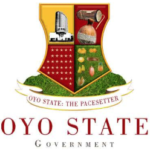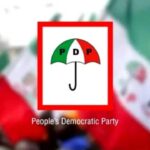All hail the Nigerian government for recognising there is poverty in the land. Not just that, the Buhari administration notes in the recently launched National Development Plan 2021 – 2025, that: “Specifically, the Plan aims to generate 21 million full-time jobs and lift 35 million people out of poverty by 2025; thus setting the stage for achieving the government’s commitment of lifting 100 million Nigerians out of poverty in 10 years.”
This assertion seems to suggest that the government is claiming to have lifted 65million people out of poverty between 2015 and 2020. It’s exciting that the government remembers its 2015 promise of getting 100 million people out of poverty within 10 years, even though at the time, the World Bank’s estimate of poor Nigerians was less than 100 million.
Sadly, the number of poor Nigerians, as measured by the World Bank, continues to grow, and is projected to hit over 100 million people or half of the population next year, from less than 70 million in 2015 when the government made the promise of lifting 100 million people out of poverty.
This rise in the incidence of poverty has been accelerated between last year and now in part by COVID-19 and related factors. The World Bank declared earlier this year that in 2020, up to seven million Nigerians may have been pushed into poverty by rising prices. That was in addition to the direct impact of the pandemic, the Bank explained. But while it’s easy to blame COVID-19, we should ask whether, in reality, the government has actually lifted as many as 65 million Nigerian out of poverty.
Let’s take stock of what the government classifies as “reforms” that have lifted people out of poverty. The most frequent references are N-Power and Tradermoni, but here what you often find is proponents dishing out figures of beneficiaries and taking that as lifting them out of poverty.
Has the government paused to measure changes in people’s standard of living between 2015 and 2021, to know if truly people are better off or worse off and whether those who the government recognised as poor in 2015 have truly been pulled out of poverty? It is also necessary to identify which of the government’s reforms, direct and indirect, can truly be claimed to have assisted the poor in navigating out of the poverty trap, in which unfortunately about half of Nigerians find themselves.
Paul Collier, Jeffrey Sachs, and other scholars identify extreme poverty as a trap that holds people until its power is broken. For Collier, these traps that sustain poverty include conflict trap and natural resources trap. For Sachs, such traps are disease, physical isolation, climate stress, environmental degradation, and extreme poverty itself.
In countries where poverty levels have declined sustainably, governments don’t just promise or make claims, they act through reforms. Such reforms create opportunities for the poor and in fact sometimes productively transfer wealth from the rich through effective fiscal policies that enhance the redistribution of income in the society without discouraging the enterprise of the rich. In fact, sometimes such policies help to fuel the capitalist aggression of the rich to invest more and grow their wealth as a hedge against the impact of the policies.
To say the least, the Nigerian authorities are yet to show any serious and coordinated policy action to lift the poor out of poverty. A N10, 000 or N20,000 Tradermoni would not do it…not even N-power or the 774, 000 jobs given to selective people for six months as a palliative for the impact of COVID-19. Those, in my view, are what they are: mere palliatives. Palliatives have never been the solution to poverty; they are not reforms capable of lifting people out of poverty and truly they have not in any way lifted anybody out of poverty. In truth, some of these cash transfers may have created more rent-seeking.
To lift people out of poverty, the government needs a coordinated strategy, anchored on reforms, with relevant partnerships with other tiers of government – state and local governments. It needs to create opportunities in different sectors by opening up latent values across different sectors and creating new ones.
It is tough to say that there haven’t been any tangible reforms that benefited the people in many sectors of the Nigerian economy since 2011. We saw how the banking-sector reforms in 2006 created new waves and opportunities in the system. We are all witnessing the impact of the pension reforms and how hitherto impoverished retirees are gradually having the hope of a good life after retirement, at least if we don’t pollute the system. We can say NHIS and private-sector HMO partly gave some segments of the poor access to healthcare
We know how reforms in telecommunication revolutionised information and communication and gave the poor access to information and a more efficient way to communicate with the world. Along with that came various commercial opportunities that improved income capacity. Those who are old enough remember what a nightmare it was to make phone calls in Nigeria, whether local or international calls. They remember that to talk to a relative outside the country then, you would probably go to the house of a rich man close to you, who had a NITEL line. You would go ahead of the agreed time of the call to wait and pray that there would be a tone for the call to come through. And, when you were done talking to the person, you would go home, happy that you had spoken to your relation.
By the time of the telecommunication reform in the country, teledensity for Nigeria was 0.4 lines per 100 inhabitants. According to Chief Ernest Ndukwe, former Executive Vice-Chairman and CEO of the NCC, as of the year 2000, Mongolia and Afghanistan were the only two nations with worse teledensity figures than Nigeria! All that changed with a simple stroke: reform.
What new reforms can we point to over the past decade? Is Nigeria dead of reform ideas or are we just lacking the will or leadership?
One extreme school of thought says the rich and political elite may be afraid that continuing on the path of workable reforms may threaten the superiority of the rich, as these reforms tend to narrow the gap between the standard of living of the rich and the poor. So, is throwing peanuts under different guises of reforms the solution to lifting the poor out of poverty or just a show of movement, as they say in one profession.

 Join Daily Trust WhatsApp Community For Quick Access To News and Happenings Around You.
Join Daily Trust WhatsApp Community For Quick Access To News and Happenings Around You.


